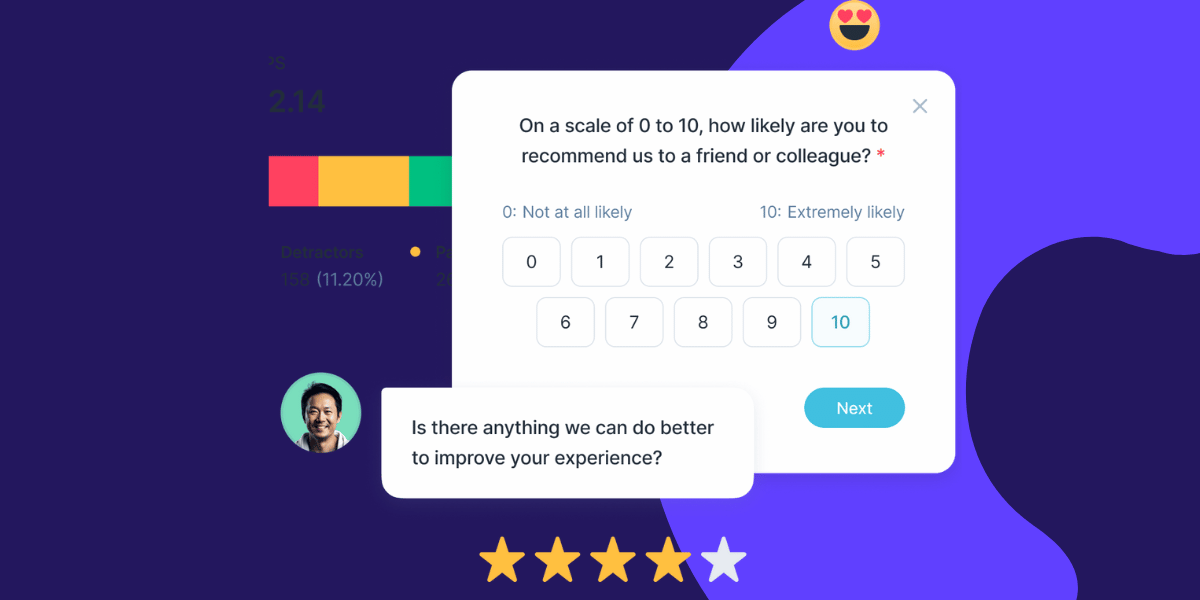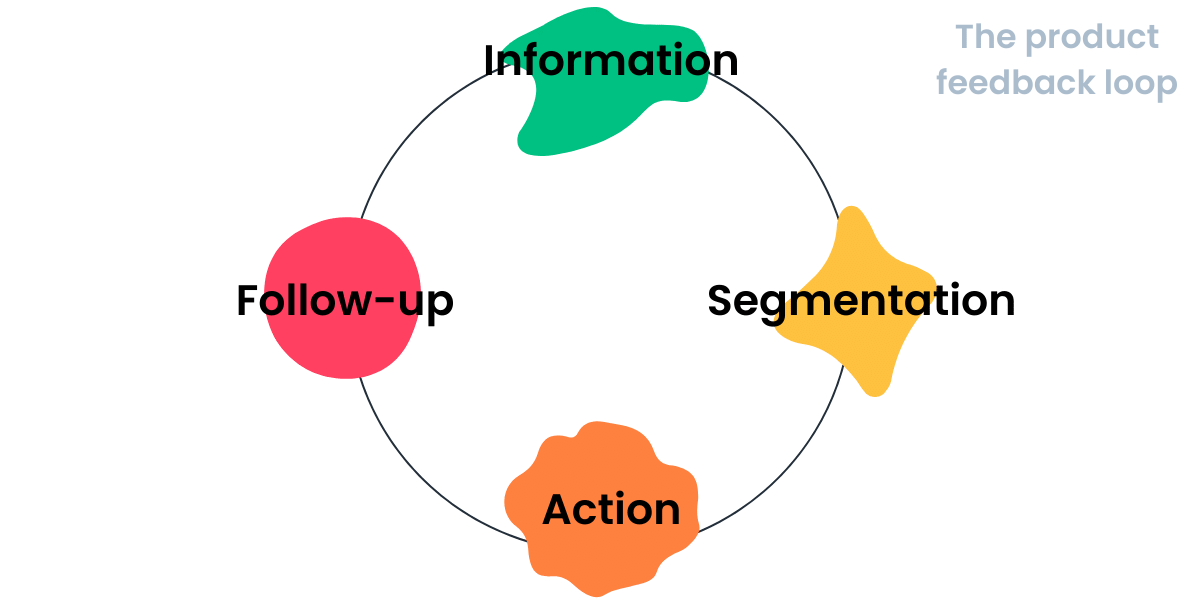
In this comprehensive guide, we dive deep into the world of user feedback analysis. By exploring various techniques and strategies, we’ll equip you with the tools you need to unlock valuable insights from your users. Join us on this journey of discovery and take your understanding of user feedback to new heights!
Why user feedback analysis is important
User feedback is crucial for businesses and organizations of all types, but user feedback without user feedback analysis is a wasted effort, and something that can prove a net negative to business. Good feedback and analysis provide direct, real-time insight into what your users think about your product or service. By analyzing user feedback, you can gain a better understanding of their needs and preferences, identify areas for improvement, and make data-driven decisions that will ultimately lead to a more successful business.
Types of user feedback
There are several types of user feedback that you may encounter, including surveys, ratings and reviews, customer support interactions, and social media comments and mentions. Each type offers its unique insights and can be valuable in different ways.
Passive feedback
Session replay tools, heatmaps, and other passive feedback methods allow you to gather data without directly asking for it. These can provide valuable insights into user behavior and preferences, as they capture actions taken on your website or app. However, keep in mind that these types of feedback may not always reflect the full sentiment of your users, and additional user feedback analysis is recommended.
Typically considered qualitative feedback, session replays, which should contain console logs, and error tracking, collate information from multiple users to paint a picture of behaviors and web application usage and preferences. The advantage of this type of insight for user feedback analysis is that product teams can gain information without any ask of the user.
Active feedback
In-app surveys, always-on feedback collection widgets, and customer support interactions are examples of active feedback, where users are directly asked for their opinions and thoughts. This type of feedback can provide more detailed and specific insights into user satisfaction and pain points, but may also have a lower response rate.
When it comes to web apps, product managers typically focus on three types of feedback to gather insights for their user base:
- In-app surveys: These can be triggered at specific points in the user journey, such as after completing a task or when navigating to a new feature. Regular delivery and user feedback analysis is made easier when tooling supports popular survey types, and response rates can be maximized by triggering surveys at the point of interaction directly inside the application, rather than email or text-based surveys where users are asked to abandon or delay their current task to complete feedback. The top survey types to create powerful insights are Customer Satisfaction (CSAT), Net Promoter Score (NPS), and Customer Effort Score (CES). each of these surveys should be delivered and measured on an ongoing basis. NPS and CSAT are most often run quarterly, whilst the CES type, should be deployed to measure the impact of product changes at the time of release – however regular that is.
- Always-on/triggered feedback widgets: These widgets allow users to give feedback at any time during their session, rather than being prompted by a survey, in this case, the submission of user feedback is triggered by a desire of the user without prompts. They can be placed strategically on your website or app to capture specific types of feedback in real time. For example, a “quick poll” widget may ask users for their opinions on a new feature, while a general feedback widget can gather comments and suggestions from users at any time.
- Customer support interactions: Customer service tickets or chats can also provide valuable user feedback, especially if they are tagged and categorized properly. By analyzing the issues and concerns raised by users through customer support, you can identify common pain points and areas for improvement within your product.
- Group/1:1 user interviews: These allow product teams to have in-depth conversations with users, gaining valuable qualitative insights that may not be captured through other feedback methods. This can be especially useful for unearthing insights that go beyond the structured data typical of an in-app survey.

Strategies for user feedback analysis
Once you have gathered a significant amount of user feedback, it’s time for user feedback analysis. Here’s a few strategies to help you get the most out of your user feedback analysis:
- Thematic Analysis: This approach involves identifying, analyzing, and reporting patterns (themes) within the data. You can categorize your feedback into different themes or topics, such as ease of use, customer support, pricing, etc. This can help you identify common issues or areas where users find the most satisfaction.
- Sentiment Analysis: This involves determining the emotional tone or sentiment behind the user’s feedback. Sentiment analysis tools use Natural Language Processing (NLP) to assess whether the feedback is positive, negative, or neutral. This can provide a quick overview of general user sentiment, helping you identify areas of concern or success.
- Trend Analysis: This involves looking at feedback over a specific period to identify any trends or changes in user sentiment. This can help you understand how changes to your product or service impact user satisfaction and pinpoint specific updates or changes that may have caused a surge in negative feedback.
- Gap Analysis: This involves using user feedback to identify the gap between your product’s current performance and the user’s expectations. This can help you identify areas where your product or service is not meeting user expectations and prioritize improvements based on user needs.
- Competitive Analysis: This involves comparing user feedback about your product or service with feedback about your competitors. This can help you understand how your product stacks up against the competition and identify areas where you could potentially gain a competitive advantage.
Remember, analyzing user feedback is not a one-time event but an ongoing process. Regularly reviewing and analyzing user feedback can help you stay in tune with your user’s needs and expectations and make informed decisions that enhance their experience and satisfaction with your product. So, it is vital to have a robust user feedback analysis system in place that can collate and analyze user feedback from multiple sources effectively. By combining insights from both active and passive feedback methods, product teams can gain a holistic view of their users and make data-driven decisions that drive continuous improvement.
Three Tools for User Feedback Analysis
With the rise of technology, there are now numerous tools and platforms available to help you analyze user feedback. From sentiment analysis software to customer feedback management systems, these tools can make the process more efficient and effective. It’s important to research and experiment with different tools to find what works best for your specific needs.
Userback.io Userback is an advanced tool for analyzing user feedback. It simplifies feedback collection by allowing visual capture for any web project. Users can easily highlight and comment directly on the screen, making feedback detailed and context-specific. With Userback, you can centralize feedback management and analysis, gaining a holistic view of user responses.
One great feature of Userback is its ability to categorize feedback and assign tasks for prompt action on key insights. It seamlessly integrates with popular project management, chat, and issue-tracking tools like Jira, Slack, and Trello, enhancing team collaboration and communication with stakeholders.
Moreover, Userback supports various user feedback analysis strategies. The categorization feature facilitates thematic analysis, while user comments provide valuable insights for sentiment and trend analysis. You can even compare feedback with product performance metrics for gap analysis. Additionally, Userback allows users to provide feedback about competitor products, enabling competitive analysis.
UserInterviews.com UserInterviews.com is an incredibly valuable tool for analyzing user feedback. It empowers product teams to efficiently conduct user interviews, gaining qualitative insights into user experiences. With UserInterviews.com, you can easily find and schedule sessions with participants who match your target demographic, streamlining the process of gathering candid feedback. These interviews provide authentic thoughts and experiences, capturing insights that go beyond surveys or customer support.
What’s more, UserInterviews.com allows you to record and transcribe interviews, making analysis and sharing with your team a breeze. This feature greatly aids thematic analysis by identifying recurring themes and uncovering deeper insights. Lastly, UserInterviews.com is instrumental in conducting gap analysis, helping you compare user expectations to actual experiences and enabling your team to address any gaps effectively.
UserVoice.com UserVoice transforms user feedback analysis by simplifying the collection of feedback from multiple channels and consolidating them into one platform. Valuable insights are never missed. Users can vote on existing feedback to identify popular demands and common issues, prioritizing feedback based on user satisfaction and business impact. With advanced NLP techniques, UserVoice extracts sentiment scores for overall user sentiment analysis, categorizing feedback and identifying patterns to deepen understanding of user needs.
UserVoice offers trend analysis, tracking changes in priority and sentiment over time, empowering adaptive strategies. And the best part? UserVoice seamlessly integrates with popular collaboration tools like Azure DevOps, Salesforce, Zendesk, and Jira, streamlining communication and enhancing teamwork. In summary, UserVoice is the ultimate solution for efficient feedback analysis, revolutionizing how we understand users and deliver exceptional experiences together!

The Process of Analyzing User Feedback
Analyzing user feedback may seem overwhelming, but with a structured process in place, it can be manageable and even enjoyable. The key steps include data collection, sorting and categorizing the feedback, identifying trends and patterns, and finally drawing insights and making recommendations based on the findings. It’s important to involve a cross-functional team in this process, as different perspectives and expertise can provide valuable insights.
Best Practices for Teams Analyzing User Feedback
To make the most of your user feedback analysis, it’s important to follow some key practices. First, make sure to regularly monitor and analyze feedback. This helps you stay in tune with your users and their needs. Next, keep an open mind and approach the analysis with objectivity. This allows you to see the insights without bias. Involving multiple team members in the process can bring different perspectives and enrich the analysis.
Don’t limit yourself to one analysis technique – use a variety to gain a comprehensive understanding. But remember, analysis is just the first step. It’s crucial to take action based on the insights and track the impact over time. This way, you can continually improve and meet your users’ expectations.
- Regular Monitoring and Analysis: To stay current with user perceptions and experiences, it’s critical to consistently monitor and analyze user feedback. Avoiding gaps in analysis will prevent missing out on important insights.
- Objectivity: It’s important to approach the feedback with an open mind. Preconceived notions or biases might hinder you from obtaining genuine insights.
- Involvement of Cross-Functional Teams: Encouraging participation from various teams within the organization can result in diverse perspectives and comprehensive insights.
- Usage of Diverse Analysis Techniques: Different types of feedback may require different analysis techniques. Using a mix of quantitative and qualitative analysis methods can offer a more rounded understanding of user feedback.
- Action and Follow-Up: The insights obtained from the analysis are only as good as the actions taken as a result. Implement changes based on the feedback and monitor the outcomes to understand the impact of your actions.
- Maintain a Feedback Loop: Always communicate the changes and improvements made based on user feedback back to the users. This creates a sense of value and trust among your user base and encourages further interaction.
Incorporating User Feedback into decision-making
The ultimate goal of analyzing user feedback is to use it as a valuable tool for making informed decisions. By truly understanding what your users want and need, you can make improvements and changes that will lead to increased satisfaction and loyalty. User feedback should be considered an invaluable resource in the decision-making process, as it provides a direct line of communication with your users and allows you to continuously improve and evolve your product or service.
Incorporating user feedback into your decision-making process is a surefire way for businesses to stay ahead of the competition and deliver exceptional experiences that meet user expectations. Prioritizing user feedback analysis in your strategies for continuous improvement and growth is key. So, why wait? Start analyzing your user feedback today and witness the positive impact it can have on your business!
Remember, success lies in truly understanding your users and harnessing that knowledge to drive meaningful change. With user feedback analysis tools like UserInterviews.com and UserVoice, analyzing user feedback has never been easier. So, unlock the full potential of your user feedback and take your business to the next level.
Start your user feedback analysis for free with Userback today – Happy analyzing!
Incorporating User Feedback into decision-making
The ultimate goal of analyzing user feedback is to use it as a valuable tool for making informed decisions. By truly understanding what your users want and need, you can make improvements and changes that will lead to increased satisfaction and loyalty. User feedback should be considered an invaluable resource in the decision-making process, as it provides a direct line of communication with your users and allows you to continuously improve and evolve your product or service.
Incorporating user feedback into your decision-making process is a surefire way for businesses to stay ahead of the competition and deliver exceptional experiences that meet user expectations. Prioritizing user feedback analysis in your strategies for continuous improvement and growth is key. So, why wait? Start analyzing your user feedback today and witness the positive impact it can have on your business!
Remember, success lies in truly understanding your users and harnessing that knowledge to drive meaningful change. With user feedback analysis tools like UserInterviews.com and UserVoice, analyzing user feedback has never been easier. So, unlock the full potential of your user feedback and take your business to the next level.
Start your user feedback analysis for free with Userback today – Happy analyzing!
